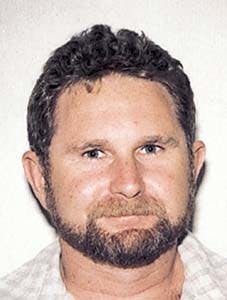Refiner Improves FCC Yields Using Latest Process Technologies
Steve J. McCarthy, Mike F. Raterman, Chris G. Smalley
Mobil Technology Co.
Paulsboro, N.J.Joe F. Sodomin
Mobil Oil Corp.
Paulsboro, N.J.Rik B. Miller
M.W. Kellogg Technology Co.
Houston
At Mobil's Paulsboro, N.J., refinery, implementing strategic technology upgrades has improved the contribution of the fluid catalytic cracking unit (FCCU) to overall refinery profitability by $0.76/bbl, resulting in short payouts of FCC feeds..
Mobil Oil Corp. and M.W. Kellogg Co. have jointly developed a number of advanced process technologies for fluid catalytic cracking (FCC). These technologies include: closed cyclones to reduce post-riser thermal cracking, stripper modifications to reduce coke make, Atomax feed nozzles to improve feed atomization, and radial injection to improve feed and catalyst mixing.
These technologies have been successfully demonstrated not only at Paulsboro, but also at other Mobil and licensee refineries.
Background
The refining industry has become exceedingly competitive over the past 15 years. The net result of competitive pressures has been significant downsizing and rationalization of less profitable refineries.
To survive, the remaining refineries must continue to improve efficiency, reduce operating costs, and adopt the flexibility to respond quickly to changes in market demands. Also, refineries must implement selective technology upgrades to ensure continued profitability.
Fluid catalytic cracking is one of the most flexible and profitable upgrading processes. For this reason, a properly equipped FCCU has significant potential to ensure that a refinery remains competitive.
Mobil/Kellogg advanced FCC process technologies have proven mechanically reliable and profitable. This article highlights FCC technology upgrades at Mobil's Paulsboro refinery. These upgrades have debottlenecked the FCCU there and improved financial performance.
Technology upgrades
Although commercialized more than 50 years ago, FCC has maintained a preeminent position by evolving to meet changing product, environmental, and operational demands quickly and profitably. Several recent hardware developments are aimed at debottlenecking unit constraints to improve financial performance.
Specific developments include elimination of post-riser thermal cracking, modification of strippers to reduce coke make, and high-efficiency mixing of feed and catalyst. Commercial demonstration of the success of such hardware developments is critical before implementation is widespread. This is because reliability and operability are vital to realizing the full benefits of a new technology.
The Paulsboro unit
The Paulsboro FCC is a UOP high-efficiency unit built in 1980 and originally designed to process 30,000 b/d. The FCC feedstock is a mixture of indigenous vacuum gas oil (VGO), purchased VGO, lube plant by-products, and coker gas oils. These feedstocks are not hydrotreated by the refinery, and are a daily challenge to upgrade.
The main products of the unit are fuel gas, C3 and C4 LPG, gasoline, light cycle oil, and slurry oil. The operating strategy of maximum conversion is typically constrained by the coke-burning rate and wet gas compression capacity.
Advanced control packages are in use on the FCC, its main fractionator, and the unsaturated gas plant.
In 1988, the unit was revamped to include closed-cyclone technology. Then, in 1995, Paulsboro installed Atomax feed nozzles and proprietary Flux Tube stripper-baffle technology to debottleneck the air blower and improve yield selectivity. Both these technologies were jointly developed by Mobil and Kellogg.
The FCCU now processes more than 46,000 b/d at conversion levels well above 70 vol %. Yield surveys were performed before and after the turnaround to quantify the benefits of the hardware improvements. The impact of each of these technologies is discussed below.
Closed cyclones
Cracking temperatures greater than 1,000° F. are common for FCCUs operated to produce light olefins and high-octane gasoline. At these temperatures, the contribution from unselective thermal cracking in the reactor vessel becomes significant.
The main advantages of catalytic cracking over thermal cracking are lower coke make and higher gasoline selectivities. Therefore, it has become imperative to redesign product and catalyst-separation systems to eliminate thermal cracking.
Many designs for reducing unselective post-riser cracking have been investigated, developed, and commercialized over the past 20 years. They all share the same basic concepts of quickly separating spent catalyst from cracked products, introducing the catalyst into the stripping zone, and minimizing the amount of time product vapors spend at high temperatures.
The evolution of FCC riser termination devices is depicted in Fig. 1 [ 24, 537 bytes]. Early designs favored crude "rough-cut" separators on top of the riser, followed by reactor cyclones. In later designs, rough-cut separators were replaced by riser cyclones.
Although they are more efficient than their predecessors, both rough-cut separators and riser cyclones discharge the products into the reactor/disengager. The large volume in this region allows significant thermal cracking to occur at temperatures approaching riser top temperature.
Analysis shows that about 50% of the hydrocarbons that exit the riser cyclones are back-mixed into the reactor vessel. Rough-cut separators result in even higher levels of back-mixing. The hydrocarbons that back-mix undergo unselective thermal cracking, resulting in a loss of gasoline and distillate yield and an increase in light gas and heavy fuel oil make.
Closed cyclones essentially eliminate the back-mixing in the reactor vessel. This is accomplished by directly connecting the outlet of the riser cyclones with the inlet of the reactor cyclones. With closed cyclones, only about 3 wt % of the riser products are back-mixed in the reactor vessel, mostly resulting from entrainment of hydrocarbons down the riser cyclone diplegs.
Converting unducted riser cyclones to closed cyclones typically increases gasoline and distillate yield by about 2.5 wt % while reducing dry gas yield by about 1 wt %. This represents a 40% reduction in yield of sulfur-free, dry gas. Even greater benefits have been obtained when revamping units that previously used crude inertial separators.1
A refinery may take advantage of the reduction in gas make by increasing cracking severity and conversion. Other refineries may choose to increase feed rate or resid content within a wet gas constraint.
Another benefit of closed cyclones is the reduction of unwanted by-products. One such thermal by-product, butadiene, increases acid consumption in downstream alkylation units. Closed cyclones typically reduce butadiene yield by about 50%.
Closed cyclones were installed on the Paulsboro FCCU in 1988. Tracer tests showed that closed cyclones reduced hydrocarbon back-mixing in the FCC reactor vessel from about 40 wt % to about 3 wt %.
Butadiene measurements after the turnaround were 45-50% lower than the preturnaround values, demonstrating a significant reduction in thermal cracking. Also, reactor vessel temperatures ranged from 40 to 70° F. lower than the riser top temperature, again confirming reduced back-mixing.
Yield surveys before and after the turnaround show that gasoline and distillate yield increased by 2.4 wt % at the expense of light gas and heavy fuel oil (Table 1) [8,740 bytes]. At that time, Paulsboro's FCC unit was constrained by the refinery fuel gas balance. Therefore, the refinery took advantage of the drop in dry gas make by increasing severity.
Despite increasing severity to the maximum riser top temperature, the fuel gas yield was still less than it had been without closed cyclones. This increase in severity further decreased bottoms yield and increased gasoline octane. Overall, closed cyclones provided a benefit of about $0.30/bbl of FCC feed.
Feed injection, mixing
The FCC feed injection system is one of the keys to optimizing yields and profitability. Catalytic cracking reactions occur in the vapor phase on the active catalyst surface. Therefore, a well-designed feed injection system must provide quick vaporization and intimate contact between catalyst and oil.
Poor feed vaporization and mixing create localized regions of high and low catalyst-to-oil ratios and induce back-mixing, which increases coke make. Improvements in feed injection can reduce coke and light gas production, resulting in higher conversion and improved selectivity toward premium products. Gasoline yield increases as high as 5 vol % and conversion increases of more than 4 vol % have been observed commercially with the Atomax feed-injection system.2
Rapid feed vaporization requires atomization into small droplets with a narrow size distribution. Smaller droplets vaporize faster than larger droplets. The feed injection system must also efficiently use the available liquid pressure drop to reduce operating costs or provide optimum atomization within fixed constraints on feed-supply pressure.
The spray pattern from the nozzle must evenly distribute the oil within the riser to provide rapid and uniform mixing of oil and catalyst. Oil should be sprayed into a dense phase of catalyst to ensure high local catalyst-to-oil ratios. The feed must have sufficient momentum to penetrate the flowing catalyst without causing riser wall erosion or excessive catalyst attrition.
Atomax nozzles have been installed on most of Mobil's FCCUs and have been licensed to more than 42 FCCUs.
Among its key features is that steam pressure provides most of the energy for atomization and mixing. In this manner, expensive pressuring of the liquid feed is avoided. Simple and reliable internals and a unique discharge cap provide superior atomization, riser coverage, and penetration without erosion of the nozzles or riser wall. Atomization is not significantly affected by large changes in feed rate; this compliments a variety of FCC operating strategies.
Atomax nozzles were installed at Mobil's Paulsboro refinery during the 1995 turnaround. Paulsboro's original feed nozzles were an atomizing "tip orifice" type, installed axially at the base of the riser.
For the revamp, the nozzles were oriented radially around the circumference of the riser (Fig. 2) [ 14,227 bytes]. The new nozzles were designed for higher feed rates and they efficiently utilize the available feed pressure drop.
Yield surveys before and after the turnaround show a 1.3 wt % increase in conversion and a 1.4 wt % increase in gasoline yield with the installation of Atomax nozzles (Table 1). Improved feed vaporization and oil and catalyst mixing reduces thermal cracking, which reduced the coke and dry gas selectivities and improves the gasoline selectivity. Reduced coke selectivity allows higher conversion within the coke-burning limitations of the unit.
Overall, Atomax nozzles provided a $0.34/bbl FCC feed benefit, representing about a 3-month payout.
Stripper baffle design
The performance of the FCC reactor stripper also has a substantial impact on yields and profitability. Ideal stripper design provides adequate catalyst residence time and low catalyst fluxes to allow steam to flow upward through the stripper. Good stripper baffle and steam distributor design are also essential to good stripper performance.
Poor stripper performance results in hydrocarbon vapors being burned in the regenerator. This increases both regenerator temperature and steam partial pressure. Poor stripping also reduces feed rate or conversion in FCCUs constrained by air blower capacity.
Mobil's Paulsboro FCC stripper is an annular design which operates at relatively high catalyst fluxes. Higher-than-design feed rates and operating severities have increased catalyst fluxes, resulting in flooding and poor stripping efficiency (Fig. 3) [ 22,424 bytes].
Fig. 4 [ 28,003 bytes] depicts the problems encountered in high-flux annular strippers. This type of behavior has been observed in cold-flow stripper modeling and confirmed in commercial tests.
A survey in August 1994 confirmed the stripper problems; depending on conditions, unstripped hydrocarbon vapor accounted for 10-15 wt % of the regenerator coke load. An efficient stripper typically achieves less than 6 wt % unstripped hydrocarbon vapor as a percentage of total coke. Low density of spent catalyst in the standpipe also indicates poor stripper performance because a high percentage of the steam added to the stripper is being entrained with the spent catalyst moving into the regenerator.
In 1995, the refinery installed a new, proprietary stripper-baffle technology known as Flux Tubes. Flux Tube technology reduces flooding and improves stripping efficiency. Compared with previous baffle designs, Flux Tubes are extremely efficient in high-flux strippers, and they significantly increase the operating range without requiring modification of the stripper shell.
The performance of conventional and Flux Tube baffles is compared in Fig. 5 [14, 288 bytes].
Flux Tubes have been successful in installations at three other Mobil refineries and in one licensed unit. The low-cost modifications did not require enlargement of the outside shell of the reactor vessel and did not extend the turnaround duration.
A survey conducted after the turnaround showed a reduction of about 65% in unstripped hydrocarbon vapor entrained to the regenerator at constant stripping severity (Table 2) [ 7,949 bytes]. The reduced regenerator coke load lowered the regenerator temperature by about 30° F. and provided the flexibility to operate the FCCU at higher feed rate and severity.
The lower regenerator temperature, accompanied by a lower steam partial pressure, reduced catalyst hydrothermal deactivation. Equilibrium catalyst activity increased by 3 MAT at constant catalyst makeup rate.
Yield surveys before and after the stripper modification show that the refinery achieved a 1.2 wt % increase in conversion at constant feed rate (Table 1). Correspondingly, gasoline and alkylation unit feed increased, predominantly at the expense of light cycle oil and bottoms.
There was a slight increase in dry gas as a result of improved stripper performance. As expected, coke yield increased slightly because better stripping reduced the hydrogen content of the coke, which reduced the heat of combustion per pound of coke.
Overall, Flux Tube stripper baffles provided a benefit of about $0.12/bbl FCC feed. Also, the operating envelope of the stripper has been sufficiently extended to allow a much wider range of operating conditions.
References
- Miller, R.B., Johnson, T.E., Santner, C.R., Avidan, A.A., and Johnson, D.L., "FCC Reactor Product-Catalyst Separation-Ten Years of Commercial Experience with Closed Cyclones," NPRA annual meeting, Mar. 19-21, 1995, San Francisco.
- Johnson, David L., Avidan, Amos A., Schipper, Paul H., Miller, Rik B., and Johnson, Tiffin E., "New nozzle improves FCC feed atomization, unit yield patterns," OGJ, Oct. 24, 1994, p. 80.
The Authors
Steve J. McCarthy is an associate engineer for fluid catalytic cracking in the refining asset department of Mobil Technology Co., Paulsboro, N.J. He is responsible for developing new FCC technologies and best operating and maintenance practices for Mobil's refineries.McCarthy has more than 16 years' experience in refinery process research and development, process design, process planning, and plant support. He has a BS from the University of Pittsburgh and an MS from the University of Pennsylvania, both in chemical engineering.
Mike F. Raterman is the skill group leader for the FCC group in Mobil Technology Co.'s refining asset department in Paulsboro. He is responsible for research and development programs and the technical content of all revamps studies on Mobil's commercial FCC units. He has a BS from the University of Missouri and an MS from the University of Pittsburgh, both in chemical engineering.
Chris G. Smalley is a senior design engineer for Mobil Technology Co., Paulsboro. He has extensive experience in FCC design and operation and, among other responsibilities, is the lead engineer for the Mobil/Kellogg FCC Technology Alliance. He has a BS in chemical engineering from the University of Natal in Durban, South Africa.
Joe F. Sodomin is the light oils business manager for Mobil Oil Corp.'s Paulsboro refinery. In previous assignments, he was an FCC design engineer in Mobil's engineering department and an FCC operations engineer in Mobil's manufacturing services group. He has a BS in chemical engineering from Drexel University.
Rik B. Miller is a technology development manager for the M.W. Kellogg Technology Co., Houston. His primary responsibilities are to direct and perform technology development for FCC and hydroprocessing. He has 17 years' experience with a variety of refining processes. Before joining Kellogg in 1992, he worked for Unocal Science & Technology in Brea, Calif., performing process and catalyst development, process engineering, and technical service in FCC, hydrocracking, hydrotreating, and delayed coking. He has a BS in chemical engineering from Georgia Institute of Technology.
Copyright 1997 Oil & Gas Journal. All Rights Reserved.





